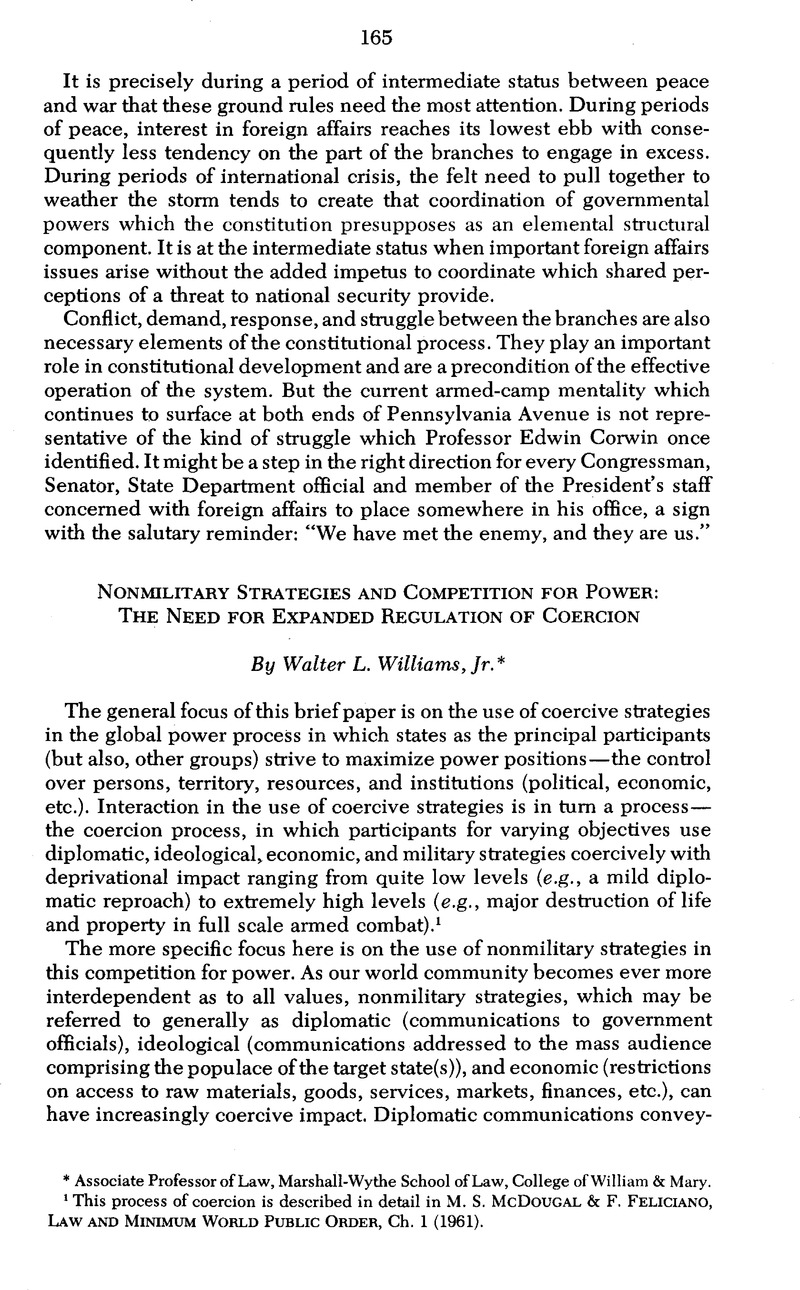No CrossRef data available.
Article contents
Nonmilitary Strategies and Competition for Power: The Need for Expanded Regulation of Coercion
Published online by Cambridge University Press: 28 February 2017
Abstract

- Type
- Rules for Unarmed Conflict in the Intermediate Status between Peace and War
- Information
- Copyright
- Copyright © American Society of International Law 1976
References
1 This process of coercion is described in detail in M. S. MCDOUGAL & F. FELICIANO, LAW AND MINIMUM WORLD PUBLIC ORDER, Ch. 1 (1961).
2 68 AJIL 410 (1974).
3 See Paust & Blaustein, supra note 2.
4 See I. Shihata. Destination Embargo of Arab Oil: Its Legality under International Law, 68 AJIL 591 (1974); J Boorman, Economic Coercion in International Law: The Arab Oil Weapon and the Ensuing Juridical Issues, 9 J. INT'L L. & ECON. 205 (1974); J. Muir, The Boycott in International Law, id. 187.
5 Supra note 4.
6 See MCDOUGAL & FELICIANO, supra note 1, especially Ch. 3, for suggestive discussion.




